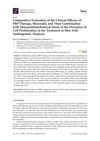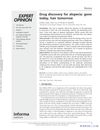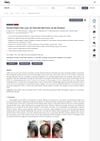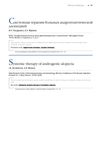8 months - 0.5mg dut, 80mg Ru58841, 5mg oral min, topical min at night, microneedle 1.5mm every other week Progress Pictures 6/16/2023
The conclusion of the conversation is that the user has experienced significant hair regrowth using a combination of medications, including dutasteride, RU58841, and minoxidil. They have not experienced any noticeable side effects and are considering a hair transplant in the future.
View this post in the Community →
Similar Community Posts Join
6 / 1000+ resultscommunity 25 months. Dutasteride, RU58841, Minoxidil, Microneedling, Nizoral, T/GEL, fixing vitamin D levels
User "manlycoffee" shares 25-month progress using Dutasteride, RU58841, Minoxidil, Microneedling, Nizoral, T/GEL, and fixing vitamin D levels for hair loss. Users discuss sources, experiences, and side effects of treatments.
community 18 months. Dutasteride, RU58841, Minoxidil, Microneedling, Nizoral, T/GEL
A 28 year old man's 18-month journey to treat his hair loss with Dutasteride, RU58841, Minoxidil, Microneedling, Nizoral and T/GEL. He experienced some side effects along the way, including translucent semen and scalp less oily.
community 25M | 10 years of gradual hair loss | Minoxidil user | Looking for input on treatment optimization before HT
A 25-year-old male with 10 years of hair loss is using minoxidil and considering adding finasteride or dutasteride, possibly with microneedling, to improve hair regrowth before a hair transplant. Community members suggest starting a DHT blocker immediately, considering oral minoxidil, and addressing low vitamin D and HDL levels.
community 1 Year Progress - MORDOR Stack
The conclusion of this conversation about hair loss is that the user "its_zi" has been using a combination of minoxidil, finasteride, dutasteride, and RU58841, along with microneedling, and has seen great results in regrowing hair. They plan to continue the treatment and consider a hair transplant in the future.
community Started fin + advice needed (19m)
A 19-year-old using finasteride for hair loss seeks advice on additional treatments. Suggestions include microneedling, minoxidil, and ketoconazole shampoo, with concerns about side effects discussed.
community Ultimate Hairloss Flowchart (for beginners)
The conversation discusses a hair loss flowchart for beginners, with mixed opinions on its effectiveness. Treatments mentioned include minoxidil, finasteride, dutasteride, microneedling, and vitamins.
Related Research
6 / 1000+ results
research Comparative Evaluation of the Clinical Efficacy of PRP Therapy, Minoxidil, and Their Combination with Immunohistochemical Study of the Dynamics of Cell Proliferation in the Treatment of Men with Androgenetic Alopecia
PRP therapy and minoxidil combo works best for male hair loss.

research Drug Discovery for Alopecia: Gone Today, Hair Tomorrow
Topical drugs and near-infrared light therapy show potential for treating alopecia.

research Experimental and Early Investigational Drugs for Androgenetic Alopecia
New hair loss treatments may include topical medications, injections, and improved transplant methods.

research Female Pattern Hair Loss: An Overview with Focus on the Genetics
Different genes cause Female Pattern Hair Loss compared to male hair loss, and treatments vary, but more research is needed to understand it fully.

research Systemic Therapy for Patients with Androgenetic Alopecia
Some treatments like minoxidil, finasteride, and dutasteride are effective for hair loss, but there's no agreed best treatment.

research Androgenetic Alopecia: Pathogenetic Mechanisms and Treatment Approaches
Androgenic alopecia, a common hair loss condition, is linked to changes in androgen metabolism and genetics, and can be treated with finasteride and minoxidil, but these treatments are only fully effective in 10% of patients.